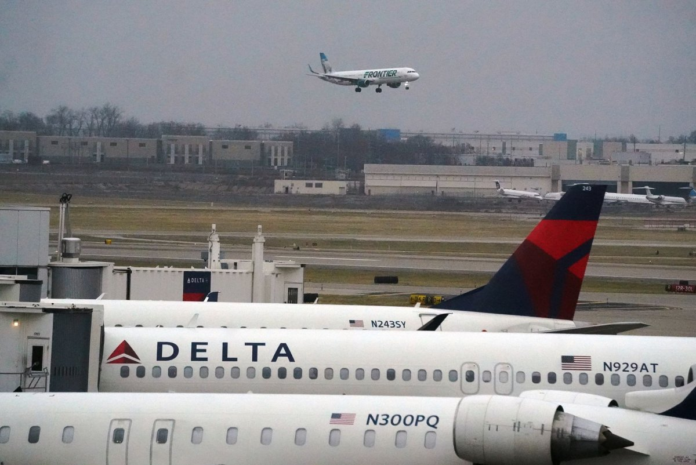An increase in air turbulence on flights is linked to climate change, according to research. File Photo by Bill Greenblatt/UPI | License Photo
Air travel has made a significant resurgence in the past year, including smashing pre-pandemic passenger records leading up to the Fourth of July holiday. However, as the number of air travel passengers climbs, the skies have become increasingly turbulent. Advertisement
The increase in turbulence has led to more reports of wings bouncing, drink carts flying and passengers being jolted around. Researchers at the University of Reading in the United Kingdom have raised concerns that the duration of severe turbulence on flights over the North Atlantic has increased by 55% over the past four decades. The significant increase has been attributed to climate change, according to University of Reading researcher Isabel Smith.
In March, seven people were hospitalized after a commercial jet experienced turbulence, while one person died in a separate incident that occurred on a business jet, according to to NPR. In December, dozens were injured on a Hawaiian Airlines flight from Phoenix to Honolulu due to significant turbulence.
Advertisement
“The jet stream, which is this fast-flowing band, is getting more chaotic and stronger with global tropospheric warming,” Smith told AccuWeather national reporter Bill Wadell.
A jet stream is essentially an atmospheric highway located at the level where jets cruise. Winds in this high-speed river of air often reach 250 mph. Typically, aircraft flying from west to east will make better time than when flying from east to west. Aircraft flying from west to east often have a jet stream tailwind, as opposed to a jet stream headwind, when flying from east to west.
Pilots tend to utilize the jet stream while flying because the wind contained inside the jet stream can move the airplane quicker to its destination, allowing the pilots to conserve fuel in the process. However, clear-air turbulence is becoming more of a problem for flights in the jet stream.
“As you’re flying, [clear-air turbulence] can come out of nowhere, hit the aircraft quite suddenly, and you don’t have time to put the seatbelt sign on,” Smith said.
Clear-air turbulence is undetectable by onboard radar equipment. While clear-air turbulence poses a significant challenge for pilots due to its invisibility, avoiding the jet stream altogether may not be a viable solution. Even though modifying flight paths to not be in the jet stream could lower the risk of clear-air turbulence, it could also lead to other issues.
Light : Slight erratic changes in altitude and/or attitude.
: Slight erratic changes in altitude and/or attitude. Moderate : Change in altitude and/or attitude, but the aircraft remains in positive control at all times.
: Change in altitude and/or attitude, but the aircraft remains in positive control at all times. Severe : Large, abrupt changes in altitude and/or attitude. Aircraft may be momentarily out of control.
: Large, abrupt changes in altitude and/or attitude. Aircraft may be momentarily out of control. Extreme: Aircraft is violently tossed about and practically impossible to control. May cause structural damage.
Advertisement
“If you were to avoid the jet stream when you’re flying, you might have your flight times be a little longer, you might actually burn more fuel, which of course is going to contribute to more significant impacts on the climate,” AccuWeather director of forensic sciences John Lavin said.
The increase in turbulence may lead to significant changes in the way we travel.
“We’ll probably end up with more convoluted, longer flight routes, longer waiting times, and flights will become more expensive,” Smith said.
In the long term, airplanes may be built with more advanced technology to detect clear-air turbulence and allow more warning for passengers on board. In the meantime, Smith said simple advice may be the most important to follow: “Keep your seatbelt on as much as possible.”
Reporting by Bill Wadell.




